-
 Bitcoin
Bitcoin $105,953.9980
3.06% -
 Ethereum
Ethereum $2,445.3292
6.68% -
 Tether USDt
Tether USDt $1.0006
-0.03% -
 XRP
XRP $2.1968
7.03% -
 BNB
BNB $643.2903
2.13% -
 Solana
Solana $144.2799
3.82% -
 USDC
USDC $1.0000
-0.03% -
 TRON
TRON $0.2739
0.49% -
 Dogecoin
Dogecoin $0.1642
4.47% -
 Cardano
Cardano $0.5834
5.49% -
 Hyperliquid
Hyperliquid $38.0741
2.80% -
 Sui
Sui $2.7741
7.56% -
 Chainlink
Chainlink $13.4107
11.26% -
 Bitcoin Cash
Bitcoin Cash $450.4828
-0.61% -
 UNUS SED LEO
UNUS SED LEO $9.1301
0.64% -
 Stellar
Stellar $0.2476
5.49% -
 Avalanche
Avalanche $18.0637
5.09% -
 Toncoin
Toncoin $2.9066
2.43% -
 Shiba Inu
Shiba Inu $0.0...01160
4.01% -
 Hedera
Hedera $0.1527
8.00% -
 Litecoin
Litecoin $84.6122
2.37% -
 Monero
Monero $317.6076
5.76% -
 Ethena USDe
Ethena USDe $1.0008
0.02% -
 Polkadot
Polkadot $3.4519
5.27% -
 Dai
Dai $1.0000
-0.03% -
 Bitget Token
Bitget Token $4.2835
5.62% -
 Uniswap
Uniswap $7.0443
9.78% -
 Pepe
Pepe $0.0...09964
7.41% -
 Pi
Pi $0.5391
4.64% -
 Aave
Aave $264.1743
11.26%
What do you think about the 5-day average volume line breaking through the 20-day average volume line but the price is stagnant?
Rising crypto volume without price movement may signal accumulation, distribution, or market indecision—watch for breakouts and confirm with indicators like RSI or MACD.
Jun 24, 2025 at 11:50 pm
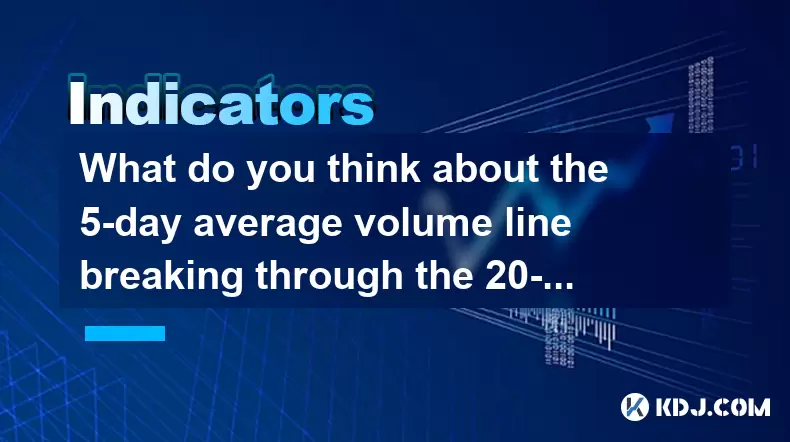
Understanding Volume Indicators in Cryptocurrency Trading
In cryptocurrency trading, volume is one of the most crucial indicators that traders rely on to gauge market sentiment and potential price movements. Volume represents the total number of assets traded over a specific period, and when analyzed using moving averages like the 5-day and 20-day volume lines, it can provide insights into whether an asset is gaining or losing interest from market participants.
The 5-day average volume line reflects recent trading activity, while the 20-day average volume line provides a broader perspective on volume trends over the past month. When the 5-day average volume line crosses above the 20-day average volume line, it typically signals increasing short-term interest in the asset. However, this scenario becomes more complex when the price remains stagnant during such a breakout.
What Does It Mean When Volume Increases But Price Doesn’t Move?
A situation where volume rises but price doesn’t move significantly is often referred to as a "sideways" or "range-bound" market. In traditional technical analysis, volume precedes price — meaning that a surge in volume usually foreshadows a breakout in either direction. However, when the price remains flat despite increased volume, several possibilities emerge:
- Accumulation Phase: Smart money or institutional investors might be quietly accumulating positions without triggering a significant price movement.
- Distribution Phase: Similarly, large holders could be distributing their holdings without causing panic in the market.
- Market Indecision: Traders may be uncertain about the next direction, leading to high volume but no clear trend.
- Resistance/Support Zone: The price might be testing a key resistance or support level, with buyers and sellers evenly matched.
This kind of volume divergence can serve as a precursor to a future price movement, but timing the exact breakout remains challenging.
How to Interpret the 5-Day vs 20-Day Volume Crossover
When the 5-day average volume crosses above the 20-day average volume, it indicates that recent trading activity has picked up compared to the historical average. This is generally seen as a bullish signal, suggesting growing momentum. However, if the price does not respond accordingly, traders should look deeper into the context:
- Is the asset currently consolidating after a strong move?
- Are there upcoming events (e.g., halving, upgrades, exchange listings) that could influence volume?
- Is the market waiting for confirmation before pushing the price higher?
Traders must also consider market depth and order book imbalances. Sometimes, large buy or sell walls can absorb incoming orders, keeping the price stable even with increased volume.
Technical Strategies for Navigating Stagnant Prices with Rising Volume
When faced with this scenario, traders can adopt several strategies to manage risk and identify potential opportunities:
- Watch for Breakouts: Set alerts around key support and resistance levels. If the price eventually breaks out of its range, it could signal the start of a new trend.
- Use Other Indicators: Combine volume analysis with tools like RSI (Relative Strength Index) or MACD (Moving Average Convergence Divergence) to confirm or refute the strength of the current market structure.
- Monitor Order Flow: Advanced traders can observe real-time order books to detect accumulation or distribution patterns.
- Wait for Confirmation: Avoid entering trades prematurely. Wait until the price confirms the volume signal by breaking out of consolidation.
These steps help traders avoid false signals and make more informed decisions based on both volume and price action.
Psychological Factors Behind Volume Surges Without Price Movement
Market psychology plays a critical role in understanding why volume increases without immediate price reaction. Here are some behavioral factors at play:
- FOMO (Fear of Missing Out): Retail traders may begin buying aggressively once they notice rising volume, which can eventually push the price higher.
- Profit-Taking: After a rally, holders might take profits at certain price points, balancing out any upward pressure.
- Hedging Behavior: Institutional traders may hedge their positions across multiple exchanges, contributing to higher volume without affecting price directly.
- Whale Activity: Large players may execute trades in smaller chunks to avoid slippage, which can inflate volume numbers without creating noticeable price swings.
Recognizing these psychological drivers helps traders interpret volume anomalies more effectively.
Frequently Asked Questions
Q1: Can volume alone predict price movement accurately?
No, volume should always be used in conjunction with other technical indicators and chart patterns. While volume can suggest strength or weakness in a trend, it does not guarantee price movement.
Q2: What timeframes are best suited for analyzing 5-day and 20-day volume crossovers?
Daily charts are ideal for tracking these volume crossovers, especially for medium-term traders. However, intraday traders may adjust the periods based on their strategy and market conditions.
Q3: Should I enter a trade immediately when the 5-day volume crosses above the 20-day volume?
Not necessarily. Entering solely based on volume can lead to premature entries. It’s safer to wait for additional confirmation such as a candlestick pattern or breakout from a consolidation zone.
Q4: How can I differentiate between healthy volume and manipulated volume in crypto markets?
Healthy volume typically correlates with real trading activity and order flow. Manipulated volume often appears as sudden spikes without corresponding price changes or visible order book depth. Cross-checking with on-chain data and using trusted exchanges can help filter out fake volume.
Disclaimer:info@kdj.com
The information provided is not trading advice. kdj.com does not assume any responsibility for any investments made based on the information provided in this article. Cryptocurrencies are highly volatile and it is highly recommended that you invest with caution after thorough research!
If you believe that the content used on this website infringes your copyright, please contact us immediately (info@kdj.com) and we will delete it promptly.
- BlockDAG: The Cryptocurrency ROI Revolution
- 2025-06-25 06:45:12
- Layer 1 Crypto Token Presales: What's Hot in the NYC Crypto Scene?
- 2025-06-25 06:30:12
- Ethereum, Investors, and Memecoins: A Wild Ride on the Crypto Coaster
- 2025-06-25 06:30:12
- SEI Price Explodes: Is This Just the Beginning?
- 2025-06-25 07:05:13
- Meme Coins Mania: Arctic Pablo and the Hunt for Presale Gains
- 2025-06-25 06:50:13
- Mark Cuban, Meme Coins, and Scams: A Cautionary Tale
- 2025-06-25 07:05:13
Related knowledge
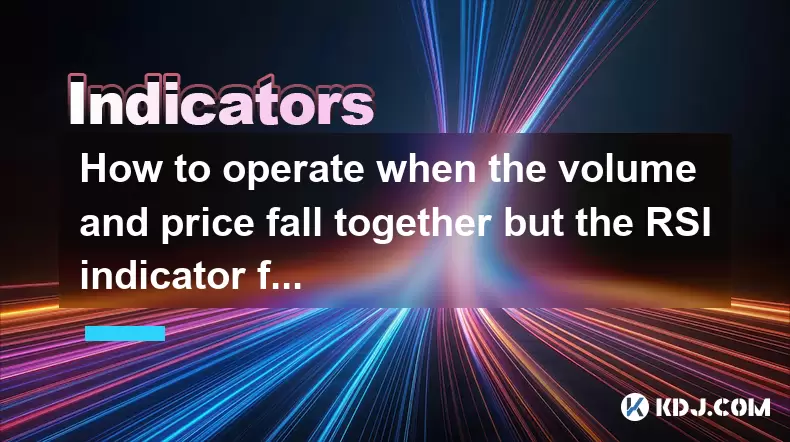
How to operate when the volume and price fall together but the RSI indicator forms a bottom divergence?
Jun 25,2025 at 04:29am
Understanding the Concept of RSI Bottom DivergenceWhen analyzing cryptocurrency price charts, traders often rely on technical indicators to spot potential reversals. One such signal is a bottom divergence in the Relative Strength Index (RSI). This occurs when the price makes a new low, but the RSI does not confirm that low and instead forms a higher low...
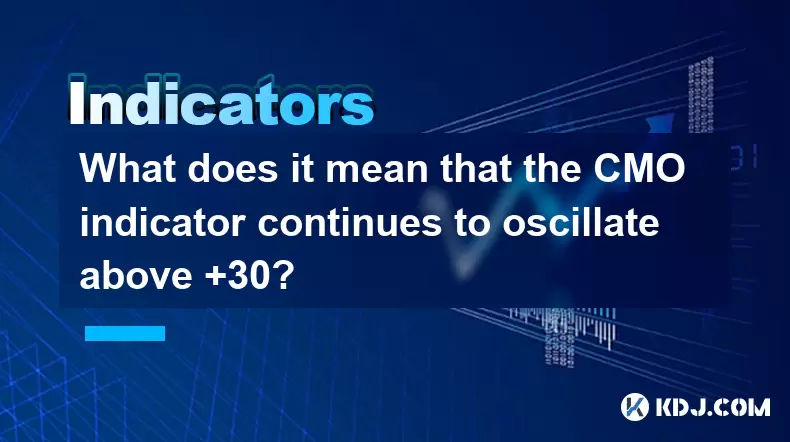
What does it mean that the CMO indicator continues to oscillate above +30?
Jun 25,2025 at 03:29am
Understanding the CMO IndicatorThe Chande Momentum Oscillator (CMO) is a technical analysis tool developed by Tushar Chande to measure momentum in financial markets. In cryptocurrency trading, the CMO helps traders identify overbought or oversold conditions and potential trend reversals. The oscillator ranges from -100 to +100, with values above zero in...

What does it mean that the ATR indicator suddenly doubles after hitting a new low this year?
Jun 24,2025 at 11:57pm
Understanding the ATR IndicatorThe Average True Range (ATR) is a technical analysis indicator used to measure market volatility. Developed by J. Welles Wilder, ATR calculates the average price range between a security’s high and low over a specific period—typically 14 periods. It does not indicate the direction of price movement but rather how volatile ...
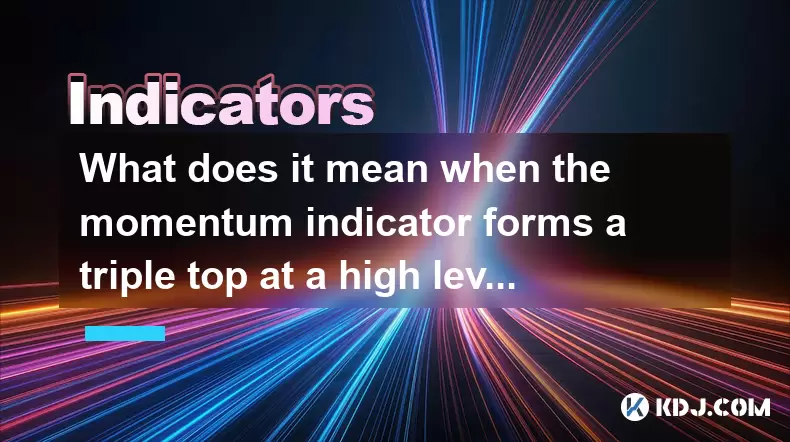
What does it mean when the momentum indicator forms a triple top at a high level?
Jun 25,2025 at 03:15am
Understanding the Momentum Indicator in Cryptocurrency TradingThe momentum indicator is a widely used technical analysis tool that measures the rate of change in price movements over a specified period. In cryptocurrency trading, where volatility is high and trends can reverse rapidly, this indicator helps traders identify potential trend reversals or c...
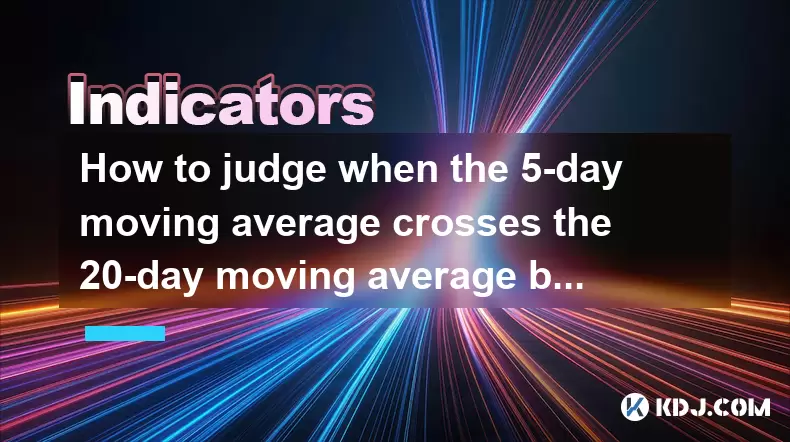
How to judge when the 5-day moving average crosses the 20-day moving average but the RSI shows a top divergence?
Jun 25,2025 at 06:28am
Understanding the Basics of Moving Averages and RSIIn technical analysis, moving averages are essential tools used to identify trends in price movements. The 5-day moving average (MA) is a short-term indicator that reflects recent price action, while the 20-day MA offers a broader perspective over a longer period. When these two lines intersect, it's kn...

What does the divergence between the volatility indicator and the price indicate?
Jun 25,2025 at 06:07am
Understanding the Volatility IndicatorThe volatility indicator is a technical analysis tool used to measure the rate and magnitude of price movements in financial markets, including cryptocurrencies. It helps traders assess whether a market is experiencing high or low volatility, which can influence trading decisions. Common types of volatility indicato...

How to operate when the volume and price fall together but the RSI indicator forms a bottom divergence?
Jun 25,2025 at 04:29am
Understanding the Concept of RSI Bottom DivergenceWhen analyzing cryptocurrency price charts, traders often rely on technical indicators to spot potential reversals. One such signal is a bottom divergence in the Relative Strength Index (RSI). This occurs when the price makes a new low, but the RSI does not confirm that low and instead forms a higher low...

What does it mean that the CMO indicator continues to oscillate above +30?
Jun 25,2025 at 03:29am
Understanding the CMO IndicatorThe Chande Momentum Oscillator (CMO) is a technical analysis tool developed by Tushar Chande to measure momentum in financial markets. In cryptocurrency trading, the CMO helps traders identify overbought or oversold conditions and potential trend reversals. The oscillator ranges from -100 to +100, with values above zero in...

What does it mean that the ATR indicator suddenly doubles after hitting a new low this year?
Jun 24,2025 at 11:57pm
Understanding the ATR IndicatorThe Average True Range (ATR) is a technical analysis indicator used to measure market volatility. Developed by J. Welles Wilder, ATR calculates the average price range between a security’s high and low over a specific period—typically 14 periods. It does not indicate the direction of price movement but rather how volatile ...

What does it mean when the momentum indicator forms a triple top at a high level?
Jun 25,2025 at 03:15am
Understanding the Momentum Indicator in Cryptocurrency TradingThe momentum indicator is a widely used technical analysis tool that measures the rate of change in price movements over a specified period. In cryptocurrency trading, where volatility is high and trends can reverse rapidly, this indicator helps traders identify potential trend reversals or c...

How to judge when the 5-day moving average crosses the 20-day moving average but the RSI shows a top divergence?
Jun 25,2025 at 06:28am
Understanding the Basics of Moving Averages and RSIIn technical analysis, moving averages are essential tools used to identify trends in price movements. The 5-day moving average (MA) is a short-term indicator that reflects recent price action, while the 20-day MA offers a broader perspective over a longer period. When these two lines intersect, it's kn...

What does the divergence between the volatility indicator and the price indicate?
Jun 25,2025 at 06:07am
Understanding the Volatility IndicatorThe volatility indicator is a technical analysis tool used to measure the rate and magnitude of price movements in financial markets, including cryptocurrencies. It helps traders assess whether a market is experiencing high or low volatility, which can influence trading decisions. Common types of volatility indicato...
See all articles
























































































